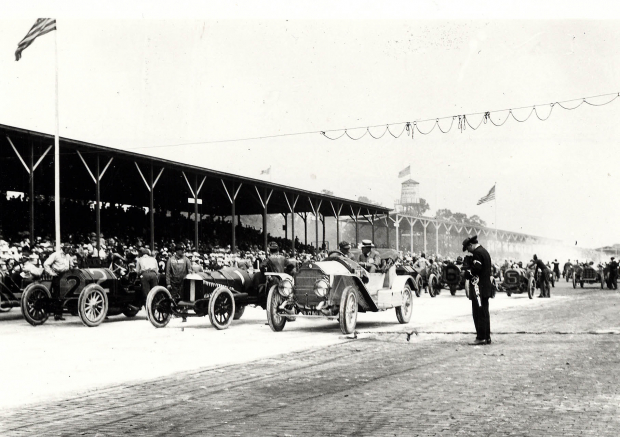NY Times “How the Indianapolis Brickyard Fell Into Place”

Today's New York Times includes an article "How the Indianapolis Brickyard Fell Into Place". The article in the Automobile Section by Don Sherman provides a history of this pioneering racetrack and gives signifcant credit to the Long Island Motor Parkway:
The movement to hard-surfaced highways a century ago not only made travel faster and more convenient for the motoring public, it also coincided with developments in road construction necessary for building racetracks for cars. Motor sports were thriving as a spectator attraction with the rise of the automobile, but suffering from a lack of safe places to compete. Sensational crashes that killed drivers and riding mechanics also took the lives of hapless spectators.
The bloodshed prompted public outrage and cries to stop the carnage. Two shrewd promoters, William K. Vanderbilt II in New York and Carl Fisher in Indiana, realized that racing would not survive without drastic improvements in track facilities.
Vanderbilt’s solution was the Long Island Motor Parkway, the road some historians say was the country’s first built specifically for automobiles, with a smooth concrete surface and overpasses at the intersections to keep traffic moving. Upon the completion of a section about 10 miles long in 1908, Vanderbilt Cup races were held for two years without incident. To recoup his $6 million investment in what became a 45-mile run from Queens to Suffolk County, Vanderbilt initially charged motorists $2 for access between races, the equivalent of about $45 today.
Subsequent fee reductions didn’t stop America’s first automobile toll road from becoming a financial fiasco. In 1938, Vanderbilt, some $80,000 behind in taxes, ceded control and stretches became part of Long Island’s public road network.

Comments